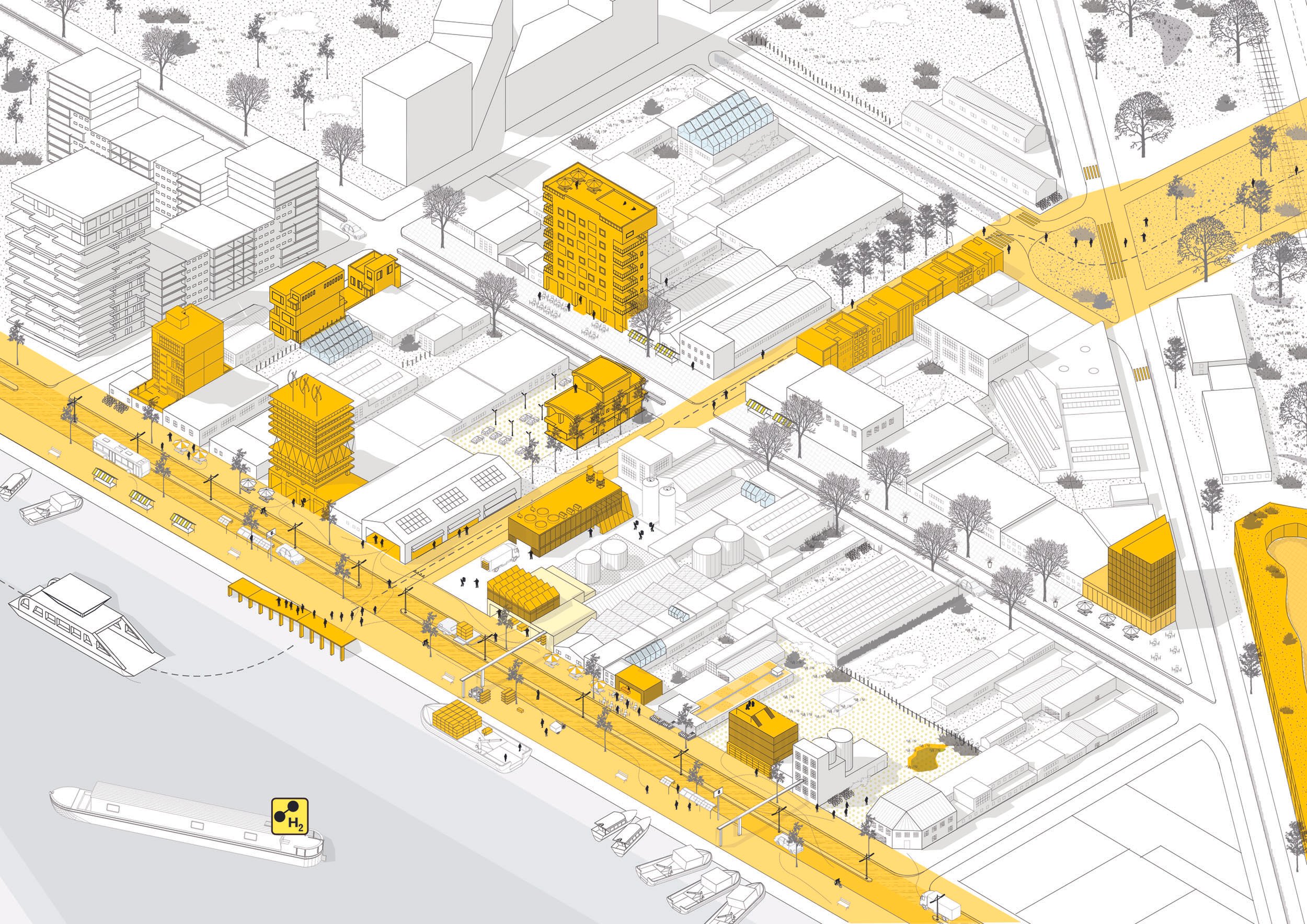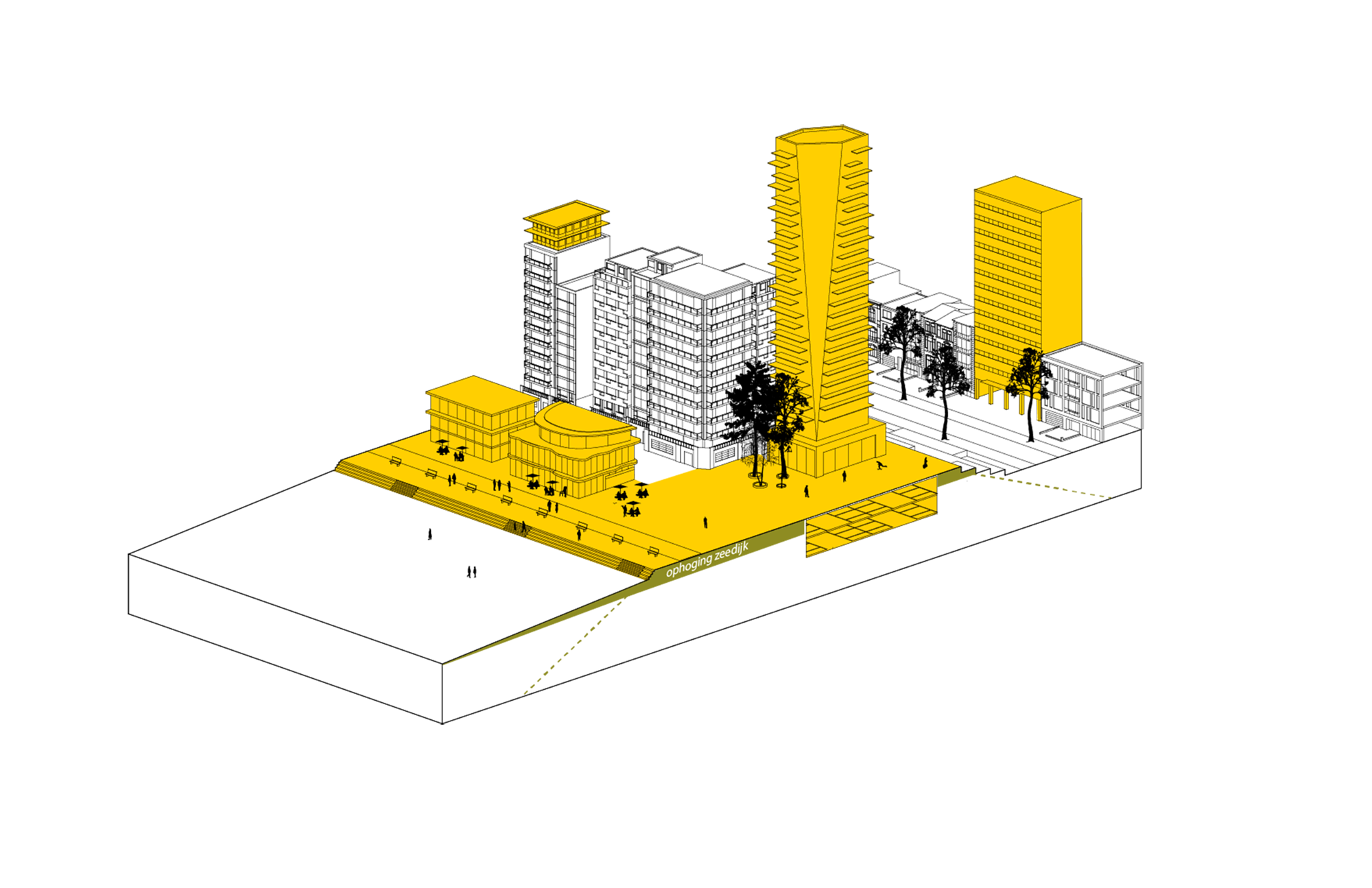
Labo Ruimte: Coastal Urban Systems
The Flemish coast is facing a series of challenges related to climate change and demographic developments. The specific urban conditions along the coast, coastal defense projects, and the growth of a circular economy and the vast development of wind energy parks give are all incentives to reconsider the development of this area. In order to stay resilient, the coast needs to work on diversity in its broadest sense: a diverse mix of people, a mix of economic activities and a mix of ecological biotopes and urban environments.
-
Location
BelgiumYear
2017 -
Tractebel
H+N+S -
LABO Ruimte
Departement Omgeving Vlaandere
Team Vlaams Bouwmeester
OVAM
Provincie West-Vlaanderen -
Design lead
Eric Frijters
Olv KlijnProject lead
Rens WijnakkerTeam members
Duong Bui
Montserrat Pantoja Navarro
Piero Vidoni
Luca De Stefano
Six coastal challenges
Six ‘coastal challenges’ are defined in order to provide a set of potential solutions for different types of urban tissues.
Vital economy: a broader economical basis
Resilient systems: the landscape structure as starting point for adaptation
Healthy living: productive open space as added value for urban development
Social-cultural connected: a diverse coast for everybody
Circular society: seasonal dynamics and spatial weaving as economic opportunity
Energy transition: harbors as starting point for a coastal economic reconversion
During an interactive process with experts and local stakeholders we investigated the potential for transformation on specific locations, using a methodology that can be applied for the whole coast. Interventions include possibilities to open up the closed wall of buildings along the coast, transforming the built environment in order to increase spatial quality as well as coastal defense, and to densify historic centers and villages, increasing their economic potential and demographic diversity. Special attention goes to the harbor of Oostende, which harbor complex is an incubator for the energy transition and the circular economy of the whole region. The results are helping local governments to make better decisions on urban development, but more important was the process of intensive multi-day work sessions on site, where local stakeholders and politicians were inspired to see the challenges they are facing in a new way.
Strategic Interventions
A series of strategic interventions in the different urban tissues will transform the Flemish coast into a more diverse, attractive and resilient environment as part of a coherent urban network. The dominant economical sectors in the coastal region form clusters that potentially transform into circular systems and attract a diverse mix of employees and consumers. Optimal conditions for new economical developments with a mix of housing, work spaces and traditional small industries in Oostende.
The project relied on a series of workshops on site, with stakeholders and experts. In the image the setting of the charrette n3: Facilities and Sustainability for Rural Settlements. Case Study: Zevekote. Picture by Montserrat Pantoja. The densification of the small polder villages, combined with a vast improvement of the public space, makes these communities more independent from their surroundings. Transition of the ‘New Atlantic Wall’ into a more open structure with a higher diversity of dwellings, better conditions in the public space and a higher coastal safety while allowing new developments.






